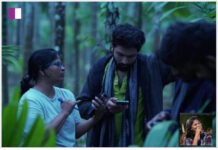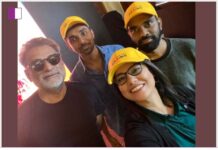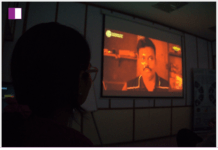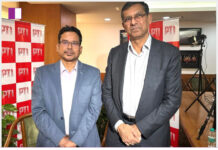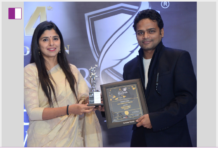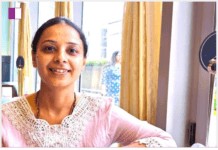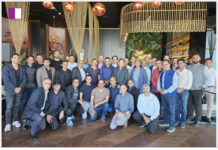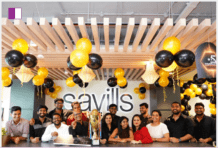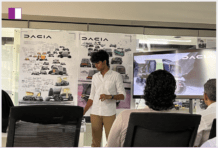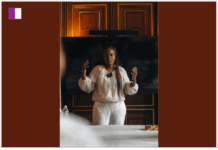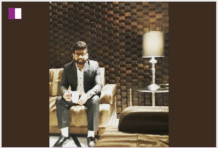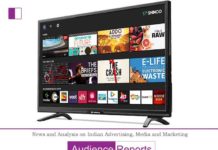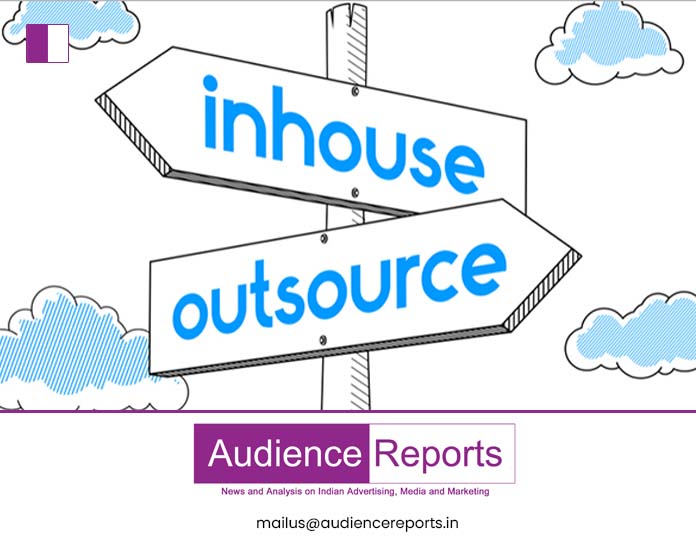What’s fueling this modern era renaissance of setting up in-house media teams alongside appointing AORs is the fervent drive to unlock a new paradigm that leverages the full potential of the marketing function driven by a confluence of factors such as the media’s exhaustive and dynamic nature that demands a fresh perspective
In an age where the digital landscape is constantly making strides, and consumer preferences evolve in the blink of an eye, marketers find themselves on a relentless quest for innovation and adaptability. As a result of this seismic transformation, traditional approaches are no longer sufficient to capture the attention and loyalty of today’s savvy audiences, making marketers step into uncharted territories, first for their creatives, and now for media.
What’s fueling this modern era renaissance of setting up in-house media teams alongside appointing AORs is the fervent drive to unlock a new paradigm that leverages the full potential of the marketing function driven by a confluence of factors such as the media’s exhaustive and dynamic nature that demands a fresh perspective.

As per Alekhya Chakrabarty, Vice-President, Marketing and Growth, Unstop (formerly Dare2Compete), this trend is gaining momentum and of course, the motive is cost cutting.
There is a reason why every brand today has also started having their internal creative teams and probably media is the next bastion now, in his views, which probably will fall to an extent but not totally because in media the cookie really crumbles when one has the scale, which agencies tend to bring in as the advantage economically.
“It takes some time to build that competitive advantage in media when building it in-house as compared to a creative team and that’s probably one of the reasons why we hear a lot of people building their in-house media divisions. In fact, a couple of folks in my team are managing all the digital inventories that we currently experiment on by talking to the publisher directly, i.e.- without any media agency per se,” he said.
He also emphasised that earlier on, when brands onboarded media agencies as the AOR, they were traditionally responsible for deploying the creatives developed by the creative minds across different channels whilst bringing in economies of scale by negotiating better deals and bringing in some sort of price mileage.
Cut to 3-4 years back, when brands began including their media teams in the creative development process, maybe from the initial creative thinking stage itself, to make the deployment better as the creatives when married with the media truth improve and the outcome becomes more impactful in itself, he added.
“If the lot of the media stays in-house and talks to the creative team more frequently, right from the initiation of the brief and the campaign design itself, then the integration happens faster and the pace of execution also accelerates,” he pointed out.

According to Pawan Sarda, Chief Growth Officer, House of Abhinandan Lodha, as well, the currently prevalent yet burgeoning trend of brands establishing their own media divisions along with appointing Media AORs is rooted in agility and speed.
“Gone are the times when brands executed three-four annual campaigns, waiting months to discern their impact on business. We now exist in a hyper-performance-oriented marketing landscape, where we assess the impact on a daily basis and possess the capacity to adapt swiftly in response to its effect on the business. Consequently, many marketing teams are opting to bring their media, content, and performance teams in-house, collaborating closely with agencies,” he opined.
In fact, he also shared the belief that if this collaboration is built upon a foundation of real-time data sharing and learning, this can be a positive trend, the objective of which is not to supplant agencies but to address the exigencies of today’s business landscape.
He further emphasised that while this trend is gaining immense pace, it is also important to note that this approach may not be universally applicable, as it comes with associated costs as well as a different scope for suitability based on the nature of the business and its lifecycle.
“For businesses where marketing wields a daily impact on outcomes, such as online and offline retail, automotive, travel, and startups, this setup appears ideal,” he suggested.

Sharing a similar viewpoint, Gaurav Soni, Head of Media, Domino’s, also emphasised that this has been an emerging trend not only in India but also globally, where brands have started to maintain in-house media capabilities while also working with appointed Media AORs.
“In an era marked by rapid technological advancement, digital transformation has become a key strategic priority for businesses and as organisations strive to adapt and thrive in this digital age, they will likely encounter various challenges that must be navigated effectively,” he said.
He also remarked that sometimes it becomes important for brands to have expertise and capabilities at their end in order to create content quickly and efficiently and align it with the brand identity and messaging along with the confidentiality of the brand’s data and to have better control on data and analytics, this approach is being adopted increasingly.
“In-house teams provide brands with greater control and access to valuable data and analytics, allowing for more informed decision-making. Also, in-house teams can react quickly to market changes and emerging trends, which can be especially beneficial in fast-moving business,” he added.
Having said that, the need for specialised expertise, in his opinion, may require external agency support considering the complexity of the media landscape and evolving marketing strategies over time. Therefore, brands should continuously assess their needs and evaluate whether the hybrid model is the right approach for them.
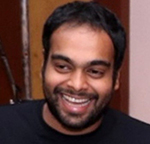
Ashwin Moorthy, Chief Marketing Officer, Godrej Consumer Products, also shared the notion that with the changing media landscape and the incoming of a lot more technology and data science into the space, marketing has become more about capabilities that one develops as an advertiser, rather than where those capabilities are built.
“In our case, we’ve had a Media AOR for many years now as well as an in-house media team as well and they cumulatively work around how we can develop better capabilities, particularly technology-led ones, rather than looking at where they are housed,” he said.
Being one of the top five advertisers in the country, he also emphasised that the brand often finds its media operations to be quite complex and specialised, which is why it looks at a joint initiative between its in-house team and the agency AOR in terms of strategic planning and brand planning.
But in terms of operations, particularly at the scale that GCPL does it at, the brand needs a media AOR as well to execute that efficiently because of its dynamic and exhaustive nature, he highlighted.
Commenting on what are the roles and responsibilities of the brand’s media AOR and in-house team, Moorthy stated that like all large brands, spearheaded by a Head of Media, the key job of GCPL’s media team is to manage the AOR with regard to agency remuneration, agency staffing, incentive payouts, reviews and competitive intelligence alongside clarifying the brand strategy and holding governance in terms of the kind of rates that we get, the sort of channel mixes that the brand builds and ensures that the brand leads are put in a way that is media intelligible.
On the contrary, the Media AOR looks after the brand’s day-to-day planning, operations, buying, scheduling and managing invoices and payouts to media vendors, he said.
Moreover, he also clarified that the brand hasn’t set up an in-house media team for the purpose of cost-saving as that is something it already does via automation which allows us to plan and manage our media channel mix better because the majority of media costs is actually media pricing.
“If we are able to plan our reach better via our media mix or even strategise the negotiation better, then those savings will outstrip any cost savings that we may have on a company structuring,” he said.
Throwing light on the challenges faced by brands in a setup where there are in-house media teams, HoABL’s Sarda denoted that one significant risk comes into being when the internal team simply translates marketing briefs into content and communication.
“Instead, we should approach the brief as a means to provide solutions to challenges. Many times, the need for speed leads marketing teams to take on tasks themselves. But if there’s a shared sense of ownership over the business, this issue can be resolved,” he said.
The media agency, on the contrary, has the experience, cross-sector knowledge, and a broader perspective that can greatly assist businesses in building their strategies, he added.
Adding to this, Unstop’s Chakrabarty also stated that media agencies tend to have an upper hand as compared to in-house teams when it comes to ideation because what happens in-house teams is that they just listen to the internal business imperative and start optimising accordingly, however, when there’s an external agency, the ideation tends to be better as they bring in perspectives that are not biased as much as the business or the brand’s truth.
Having said that, he also acknowledged that internal teams tend to provide a proper measurement of ROAS and ROI for every buck that is spent on monthly levels, if not daily or weekly, which is something that media agencies typically don’t provide so frequently.
GCPL’s Moorthy also opined that while the in-house division can sit and plan for running one or two campaigns when such a thing has to happen at a scale where the brand rolls out over two dozen campaigns a month, as happens in the case of GCPL, one would eventually need to develop the expertise of an agency to run the campaigns as it is almost impossible to imagine that part being in-house in a way that is fully efficient, effective and cost-beneficial.
“It is essential for brands to have a mix of both in-house media division and media AOR because a media agency brings one a lot of heft in the market because they negotiate as an agency, unlike smaller advertisers who struggle to do this operational task of negotiating with 100 channels at scale,” he said.
Further, he also added that it is this cumulative effort that precisely helps in bringing the value of media to business in a better way wherein the in-house team translates the company strategy to media strategy, followed by the media AOR which translates the media strategy into media operations.
To this, Domino’s Soni also pointed out that even if brands are moving towards a hybrid model wherein they’re establishing in-house media capabilities to gain more control over certain aspects of their media strategies, such as data analysis, content creation, and real-time decision-making, they do continue to collaborate with media agencies who they onboard as partners for specialised services in media planning, buying and optimisation, industry insights, and access to a broader media landscape wherein they get more value for their advertising spends by efficiency and cost savings through negotiations or bulk buying at scale.

